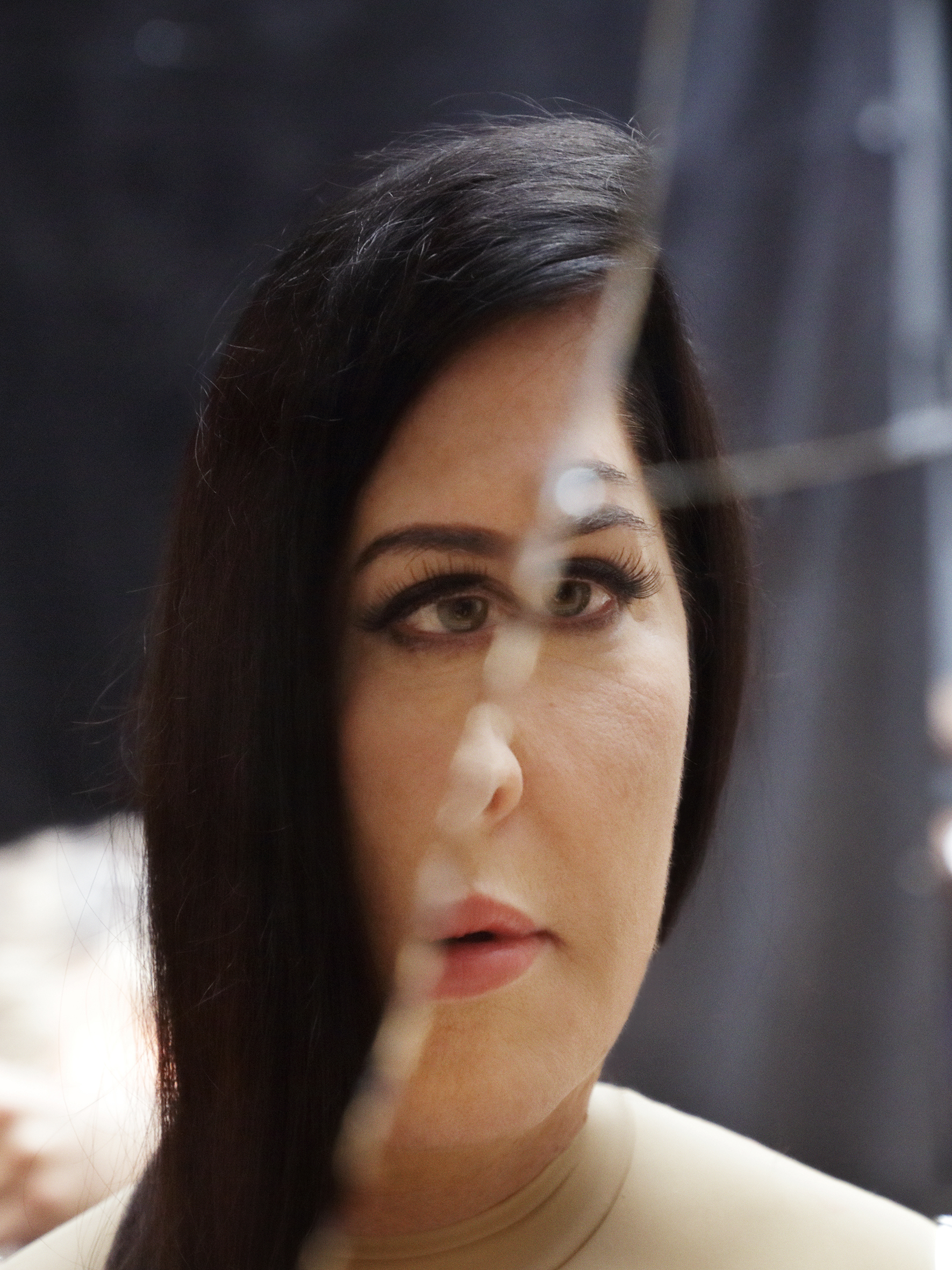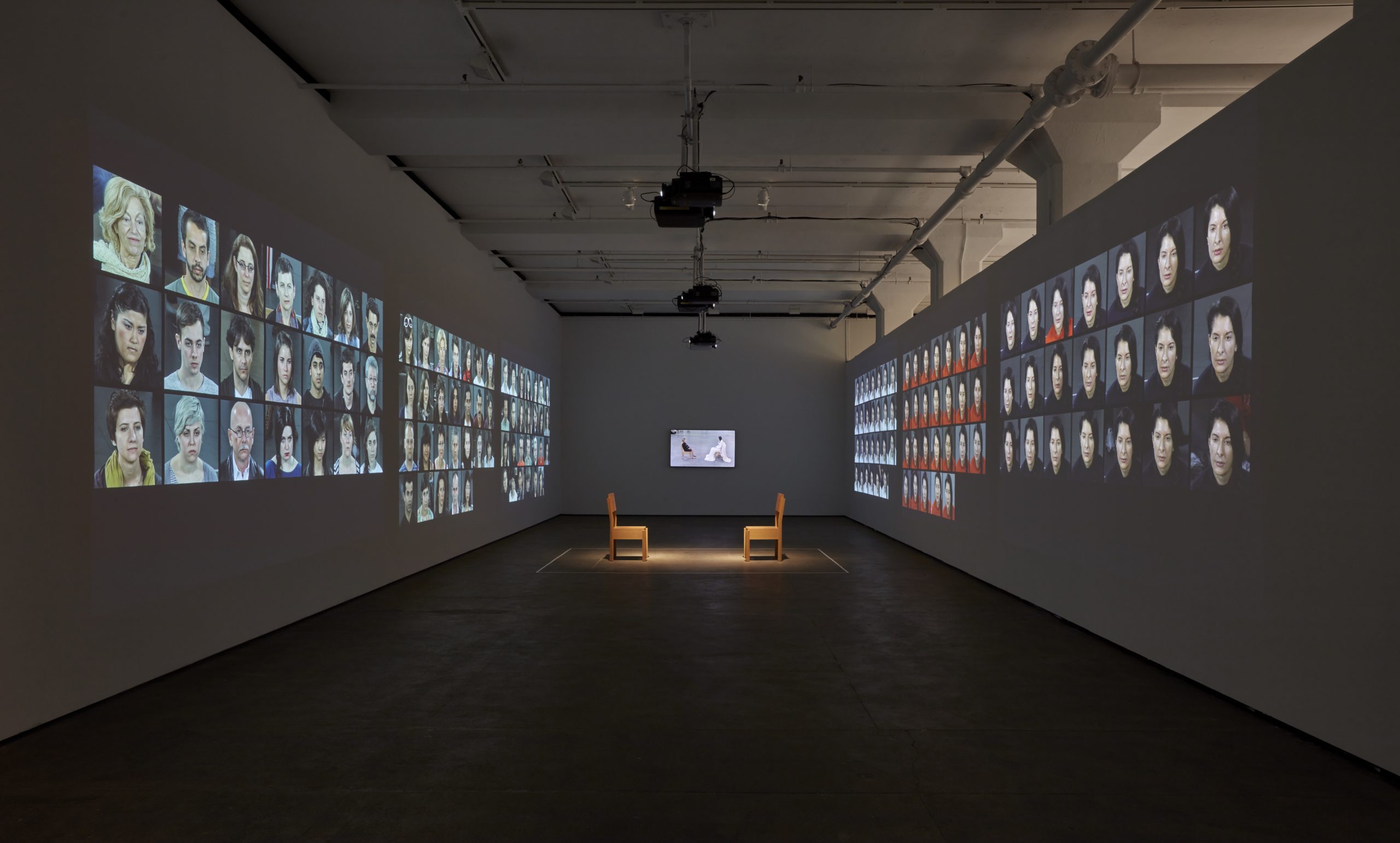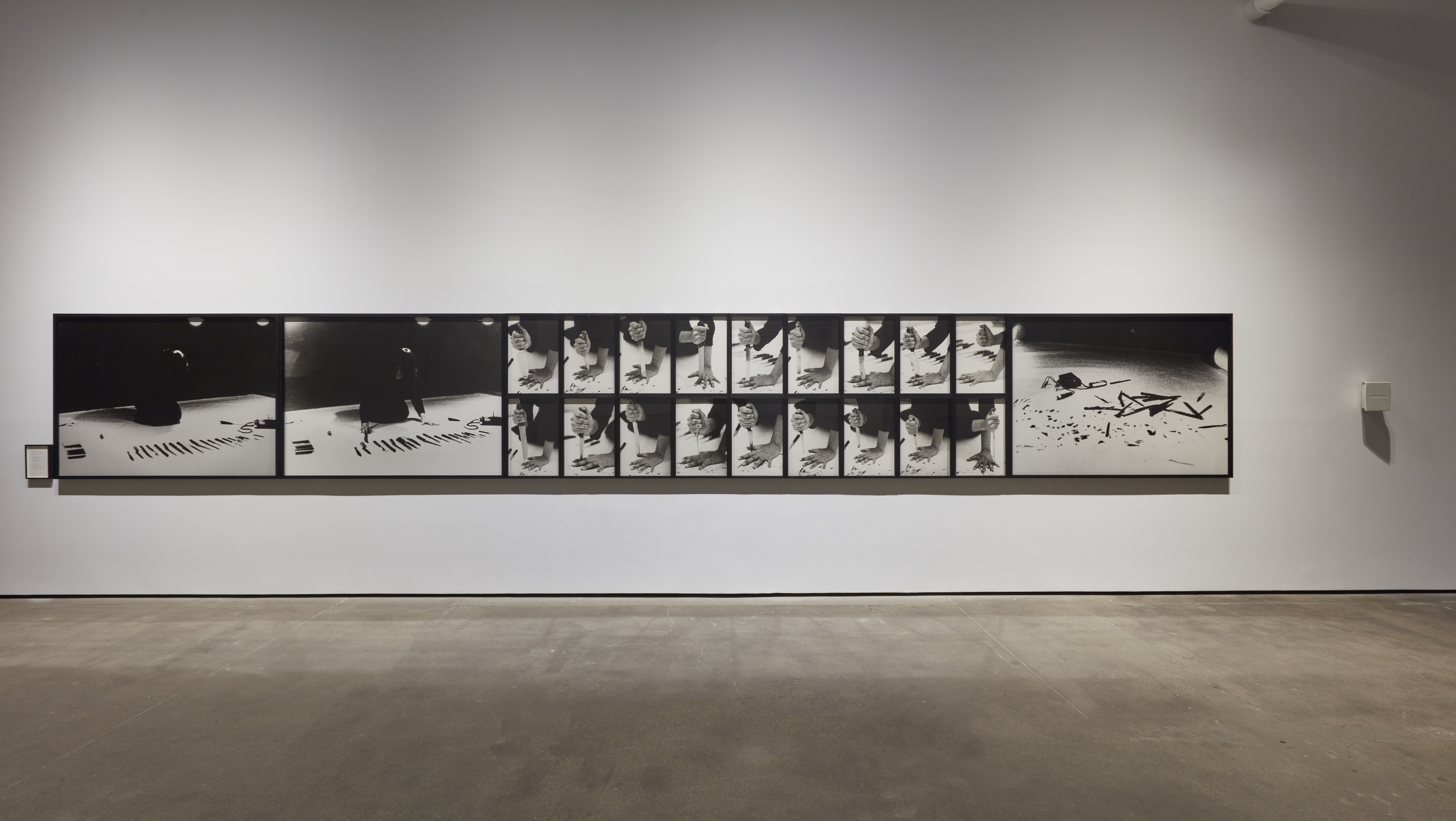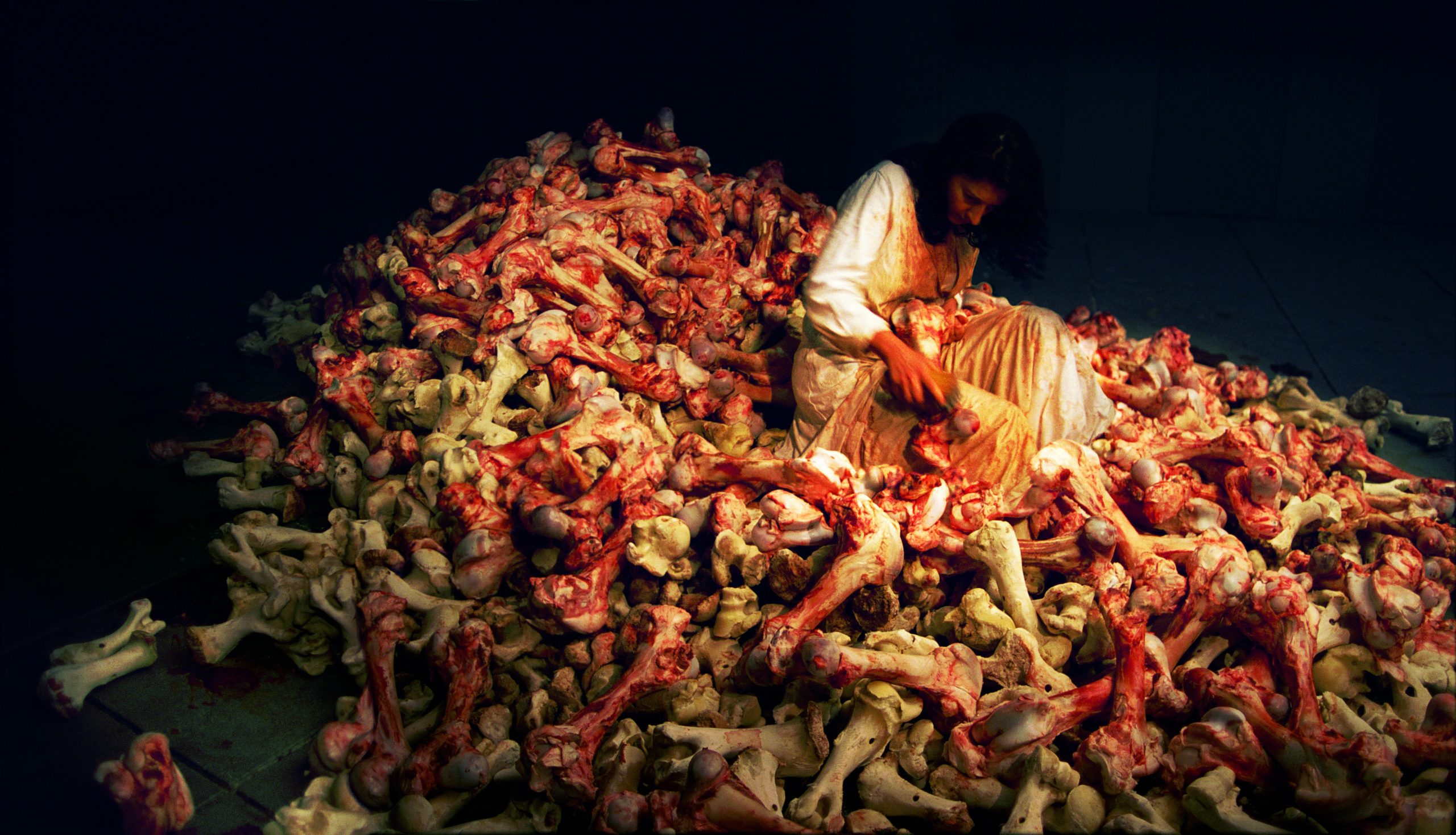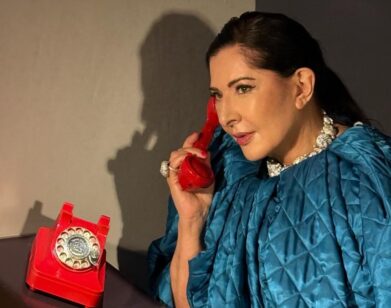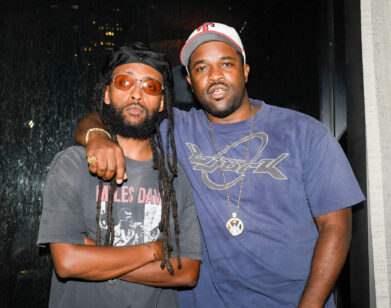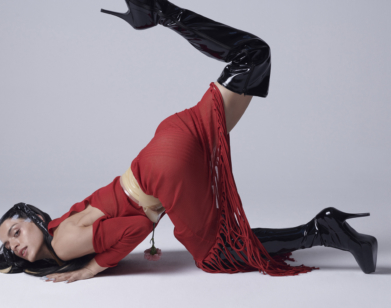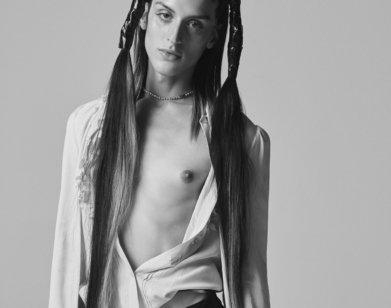art!
Marina Abramović Is Forever Young
For Marina Abramović, the best art is “a non-commodity,” she tells us over the phone, “You can’t sell it for millions of dollars. You have to be there to experience it.” Over her five decades-long career, the Serbian performance artist has dedicated herself to making work you can’t touch—exploring the flexibility of our boundaries, the depths of our emotions, our capacity to endure physical and emotional pain—by crafting fleeting moments that unfold in real time. Last week’s opening of Performative, Abramović’s new exhibition at Sean Kelly New York, offers fans of the 75-year-old artist to view a selection of her past works in one place, from 1976’s Rhythm 10 to The 7 Deaths of Maria Callas, her new opera-turned-film. The exhibition reflects Abramović’s decades-long obsession with the audience-artist relationship—but this time, she’s turned her focus to younger generations, who are highly skilled in the art of performance themselves. Below, Interview spoke with Abramović about why young artists should never compromise, her 50-year career, and living in the present. “Don’t ever call me the grandmother of performance art,” Abramović says, “Just call me a warrior.”
———
ERNESTO MACIAS: How’s it going?
MARINA ABRAMOVIC: I’m just putting some oat milk in my tea. I’m going to the spot in my house that isn’t a mess. Okay, now I’m ready.
MACIAS: How’s your day going, besides the renovation?
ABRAMOVIC: I’m incredibly busy. I wake up at 6:30 every morning and I still can’t do everything. I have to go to Lithuania for a big show, but unfortunately I have to transfer flights in Poland, which is not the safest place right now. Then I have to go to a small little city in Denmark to receive an award. Then I have to go to Copenhagen to present the movie I made about Ulay and me. Then I have to go to Berlin to do my opera, then I’m back home. Then the summer and fall are mostly free.
MACIAS: Oh wow. I was at the gallery opening for your show. Why did you decide it was the right time to host a retrospective?
ABRAMOVIC: You know, retrospective isn’t really the right word—I think of retrospectives in museums. It was more of a compilation—to see very early work and new work and everything in between. Basically, I showed four different sides of my work. So many young people have never seen these works. I wanted to give the public an opportunity to reflect on the moment in which we are living. I don’t want to say retrospective because it just sounds so definite. I had a huge retrospective in New York and it had a huge amount of work.
MACIAS: I heard that Performative is your first show in New York in seven years. How does it feel to be back after such a long time?
ABRAMOVIC: New York is a strange place. Since Trump was elected, I didn’t want any work in America, I only wanted pieces in Europe and Asia. That’s not just me—so many artists felt that way, because the culture had changed so drastically. But I love the energy and my connection to the public, so I was very happy to see lots of people at the gallery. I kissed everybody and nobody had to wear masks, and god, it was great. I really had a good time, because I’ve hated all of this virtual connection in the past two years.
MACIAS: There was such good energy in the exhibition space.
ABRAMOVIC: Some of the public was super young, all these kids. There was this young girl who was crying and showed me her huge tattoo of “Rest Energy,” my work with Ulay—my god! That’s a big thing, to have the entire performance tattooed. So, I love this relationship with young people. To be there for them and offer advice about the world.
MACIAS: That was my next question actually. For a lot of people, including myself, this is the first chance to experience your work in person. Was it intended to draw in younger crowds? What do you want them to take away from this?
ABRAMOVIC: No, they came by themselves! [Laughs] They came with my books for me to sign. I could hardly walk through the gallery, from talking and taking selfies. They hug me and I hug them and we all get very excited. But for me, it was very important to show art from The Artist is Present. More than 500 people were part of that, and it was filmed in real time, so this installation took years of editing. You see all these people vibrating and changing, but you see me as a constant, not moving, not drinking water, just observing. When you watch this installation, you can the really strong here and now of being in the moment. Every person that was in the installation is now 12 years older, and now they can go back and see themselves.
MACIAS: That’s incredible. One that I was particularly interested in was “Rhythms 10.” Why is that work important for you?
ABRAMOVIC: I wanted to show how I started as a performance artist, my first piece. I was only 23 when I started this work, and a Super8 camera was too expensive, all we had was a little tape recorder. So what you have is a photographic performance and tape-recorded sound and that’s it. In the piece, I’m playing that game where you stab a knife between your fingers, and every time I cut myself I would record the sound on a tape recorder. Then I would take a second tape recorder and try to repeat the mistake from the first time. I only missed twice. The whole idea of the piece was to bring past mistakes into the present. I was going very deep for only 23 years old. I think it’s interesting to see the evolution of my work, because it’s only 50 years later—it’s insane. I have no idea how it all went so fast.
MACIAS: And you’ve done so much. Like you said, there are so many kids following you now, what advice would you give an aspiring performance artist?
ABRAMOVIC: First of all, they have to be afraid of nothing and nobody. They have to follow their heart, they can’t look at their friends, they have to find the message in themselves. Not everybody can do every performance, so it’s very important to find what type of art is best for the person. It’s very hard to do performance art, and most of my contemporaries, when they came to age 30, stopped and did something else. I don’t know anybody still performing at my age—they’re either dead or sick. To me it’s one of the hardest types of art, because it’s immaterial, it’s time based, it’s very much to do with emotions and the public, and a non-commodity–you can’t sell it for millions of dollars. You have to be there to experience it.
MACIAS: That’s an important message. How have you done it for so long?
ABRAMOVIC: [Laughs] My dear, lots of discipline. It takes unbelievable will power and lots of discipline. I am like a soldier, a warrior. Don’t ever call me the grandmother of performance art, just call me a warrior. The title of my biography, which is translated in 22 languages, is Walk Through Walls. I am not standing in front of the wall, I am walking through it, and I never give up.
MACIAS: Your film, The Seven Deaths of Maria Callas, features a lot of Willem Dafoe. Can you tell me about that?
ABRAMOVIC: Somebody told me that I should never do opera, because it’s old fashioned and it’s too long. But I am so secure in performing that I want to experience all kinds of theater. I noticed that in a lot of operas, women die a lot, so I focused only on the dying. I showed seven operas’ worth of dying in one hour and 36 minutes—I showed the knifing, the jumping, the burning, suffocation, heart attack, everything. In my mind, for an artist to perform so emotionally over and over again, I said, “Who could be a better villain than this wonderful, charismatic talent [Willem] Dafoe?” He has a face for it and we’re real friends, so I asked him to do it. Did you ever get a chance to see a bit of “Opera”?
MACIAS: I went twice.
ABRAMOVIC: There are seven acts, all shot different ways. I adapted it to today. Willem helped me learn how to act, and I’m really grateful for that. Riccardo Tisci made the costumes, which are masterpieces.
MACIAS: You basically created a feature film.
ABRAMOVIC: We did everything in Hollywood, and the opera is going to be performed at the Armory in New York. It’s touring Europe and then America, so you will get to see it next year.
MACIAS: I cannot wait to experience it in real life.
ABRAMOVIC: I would lastly like to mention Ukraine. This, for me, is a very strong moment in human history. A few months ago, I made the biggest installation of my life—a 40 meter long wall that was an homage to the Holocaust in 1943, when they killed 130,000 people in three days—gay people, Jewish people, gypsies. It’s at the Zelensky Jewish Memorial, and it’s called “The Wall of Crying and Feeling.” To me, it’s almost a prediction of what’s happening now, and I hope it becomes the Wall of Healing. I give my complete support to Ukraine. People are dying, and in this kind of situation, we all—especially artists—have to be very strong with our voices. We all need to be on the same page, against this barbarian thing. Putin is a 19th century brutalist.
MACIAS: It’s true.
ABRAMOVIC: But that’s really it. Let’s enjoy this moment before the world explodes, though I am very worried.
MACIAS: I’m worried every day, I don’t know where the world is heading and I wish I felt and knew that it was going to be okay. I think that everyone feels that way, but we must keep going because that’s the only option we have.
ABRAMOVIC: It’s so uncertain, because this guy can press the button at any minute. Like I depict in “Balkan Baroque,” which is about the Balkan war, you can never wash your hands from war. How old are you?
MACIAS: I am 29.
ABRAMOVIC: That’s my favorite generation. My generation is so boring, always complaining. I just can’t stand it. I can’t relate to them, but I can with you.
MACIAS: Well, I hope I stay 29 forever, then.

